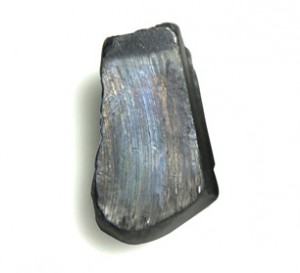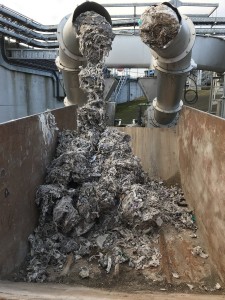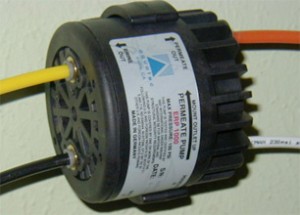The Invisible Nightmare in Your Fleece
Washing a single polyester jacket can send 1,900 tiny synthetic micro-fibers into waterways, where they can soak up toxins and get eaten by fish. So what is the outdoor industry doing about it?
by Mary Catherine O’Connor
Gregg Treinish is dismayed about what is coming out of his washing machine.
“What I’m seeing is shocking. Every couple of weeks, I clean out the filter and put the contents in a 32-ounce Ball jar,” says the founder of Adventurers and Scientists for Conservation (ASC), a nonprofit that trains outdoor enthusiasts to collect data for environmental researchers. After roughly two months, Treinish says, “the bottle is more than half-full of the crap that would have otherwise been shed right into the waterway.”
That crap is thousands of synthetic fibers shed from Treinish’s clothing during wash cycles (he captures them in an aftermarket filter), and the waterway is Montana’s Gallatin River. Treinish, whose organization receives financial support from a number of outdoor-gear companies, recently launched a campaign to track the flow of those fibers into fresh water. He plans to share that data with his funders.
What’s so bad about a few plastic threads? In 2011, British ecologist Mark Anthony Browne published a study describing the discovery of micron-scale synthetic fibers, mostly polyester and acrylic, in sediments along beaches the world over, with the highest concentrations appearing near wastewater-disposal sites. That strongly suggested that the micro-fibers came from apparel, a hunch he checked by filtering 1,900 fibers found in the waste-water from washing a single fleece jacket. A similar study at VU University Amsterdam in 2012 estimated that laundry wastewater is sending around two billion synthetic microfibers per second into Europe’s waters.
Of course, wool and cotton clothing sheds fibers, too. But those materials biodegrade. Plastics contain potentially harmful additives and can absorb toxins, including polychlorinated biphenyls (PCBs), that they encounter floating in waterways—and then get ingested by small organisms, crustaceans, and fish. These particles can accumulate in the animals’ guts and tissues, potentially weakening immunity or disrupting their endocrine systems. Less is known about how that payload may accumulate up the food chain.
New research shows that microfibers are even more abundant in our lakes and rivers than microbeads from shampoo and body wash, which have been banned in seven states. “We tested effluent from wastewater-treatment plants and found that 85 percent of the plastic it contained was fibers, whereas beads and other fragments only made up 13 percent,” says Sherri Mason, a professor of chemistry at the State University of New York at Fredonia. “Is it rocket science to assume those fibers are going to end up in some body of water?”
So while Treinish’s half-full Ball jar might not seem like a big deal, it represents a very thin slice of an incalculably large pie. And he believes that manufacturers are going to have to address their role in microfiber pollution sooner rather than later. “Apparel companies are realizing that once news about microfibers hits the mainstream media,” Treinish says, “they’re going to have some major issues to contend with.”
In 2013, Browne tried to form a coalition with big outdoor-industry brands, including Patagonia and Polartec, to track micro-fibers to their manufacturers. Most of the companies that responded declined to join Browne’s effort, saying they wanted to learn more about the problem—and how serious their role in it is.
That’s a hard question to answer. According to 2010 figures from the United Nations’ Food and Agriculture Organization, roughly half of all the clothes bought in developed countries—and 68 percent in the developing world—are synthetic. Your home is likely festooned with synthetic fibers as well, from carpeting to couch covers. But how often do you wash those items, compared with your polyester base layers, ski socks, fleece jackets, and pullovers?
Much of the clothing in question isn’t gear at all—hello, jeggings! But outdoor brands have long relied on the performance attributes of synthetic fabrics. Combined with chemical coatings and membranes, they can be both waterproof and breathable. While warm, odor-resistant wool has recently seen a bump in use for outdoor apparel, the market’s dependence on synthetics hasn’t changed.
As one industry source pointed out to me, so far there is no miracle fiber that is both high performing and environmentally benign. Conventionally grown cotton, for instance, requires significantly more water to produce than synthetics, utilizes far more land, and relies heavily on fertilizers and pesticides. And some manufacturers, environmentalists, and scientists, including Browne, suggest that the appliance industry should bear some of the responsibility, since washing machines don’t filter out small particles and add-on filters like the ones Treinish uses, which are designed to keep lint out of septic tanks, still don’t catch the tiniest fibers.
That said, the performance-apparel community is beginning to look inward. The Outdoor Industry Association’s Sustainability Working Group, which represents 250 companies, has started to examine the issue, with cooperation from marine-debris specialists at the Ocean Conservancy. The investigation is still in its infancy, cautions Beth Jensen, OIA’s director of corporate responsibility. “You can’t mobilize an industry around an issue until you have all the facts,” she says. “But we do recognize the urgency around microfibers, and we want to move forward.”
Among individual brands, Patagonia has taken the most concrete steps in that direction. Though it declined Browne’s request to work together, the company is collaborating with the Bren School of Environmental Science and Management at the University of California at Santa Barbara to identify which synthetic materials in its supply chain shed fibers. “Everything we learn from this project will be useful information,” says Adam Fetcher, Patagonia’s communications director, “whether we find that we are part of the problem or not part of the problem or somewhere in between.”
Other brands I called, like Polartec and the North Face, elected not to comment. Columbia Sportswear, which was the target of an online petition initiated by anti-plastics group the Story of Stuff, provided a statement from Peter Haney, its manager of corporate responsibility. “Columbia is in the early stages of reviewing Dr. Browne’s initial research,” he wrote. “We will continue to be involved through industry-wide collaborations like OIA’s Sustainability Working Group.”
For now, the most significant progress is taking place in Europe, where a new research consortium called Mermaids, funded by the European Commission and promoted by the Netherlands’ Plastic Soup Foundation, is dedicated to reducing microfiber shedding by 70 percent. The first step is to identify the worst culprits. Browne and others are working to develop a process that can trace a polyester or nylon thread back to its point of origin by identifying the fingerprint left behind by manufacturing dyes and chemicals. The plastics in medical implants go through a battery of certifications before they’re used in human bodies, he argues. Why shouldn’t consumer plastics undergo equally rigorous trials to determine their impact on aquatic ecosystems?
That may be a long way off. “Hey, I live in Maine, and I could not live without my fleece,” says Kara Lavender Law, a microplastics researcher at the Sea Education Association. “The big question is: Where should we be using plastic? It’s clearly a very useful, beneficial material, but maybe it’s time to reconsider wool or other materials that were replaced with synthetics.”
Pure Water Gazette Fair Use Statement









